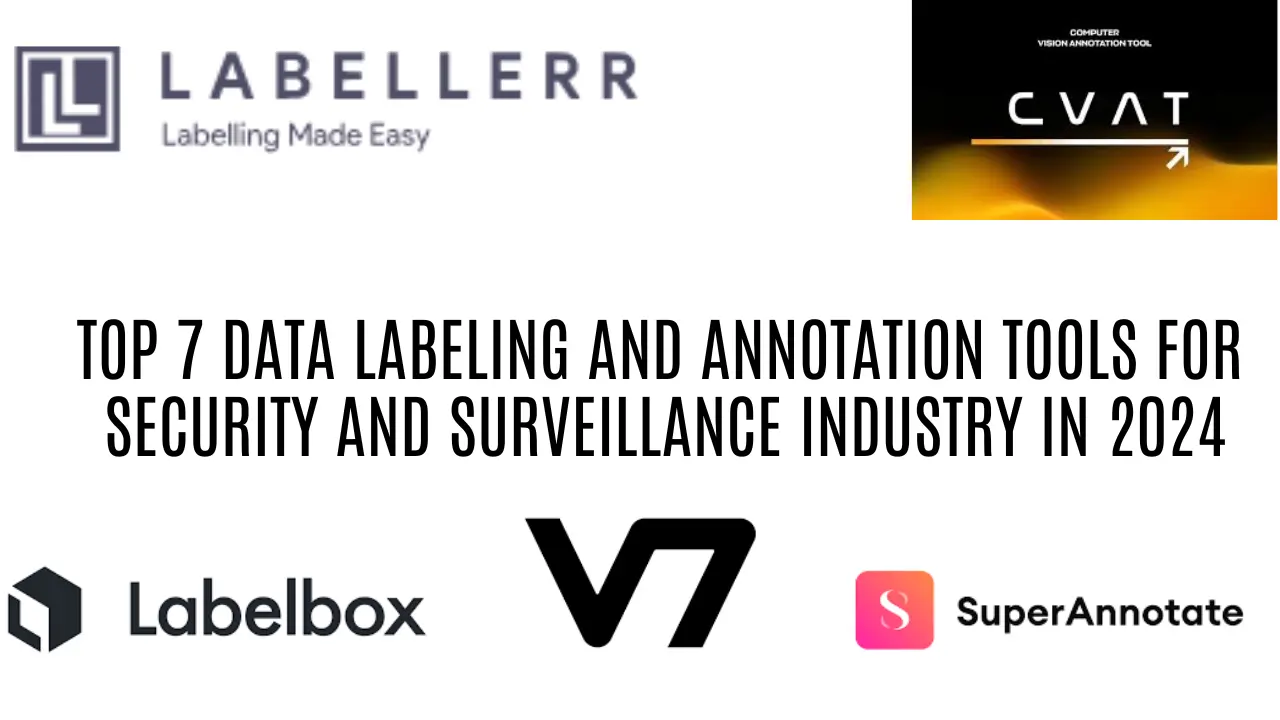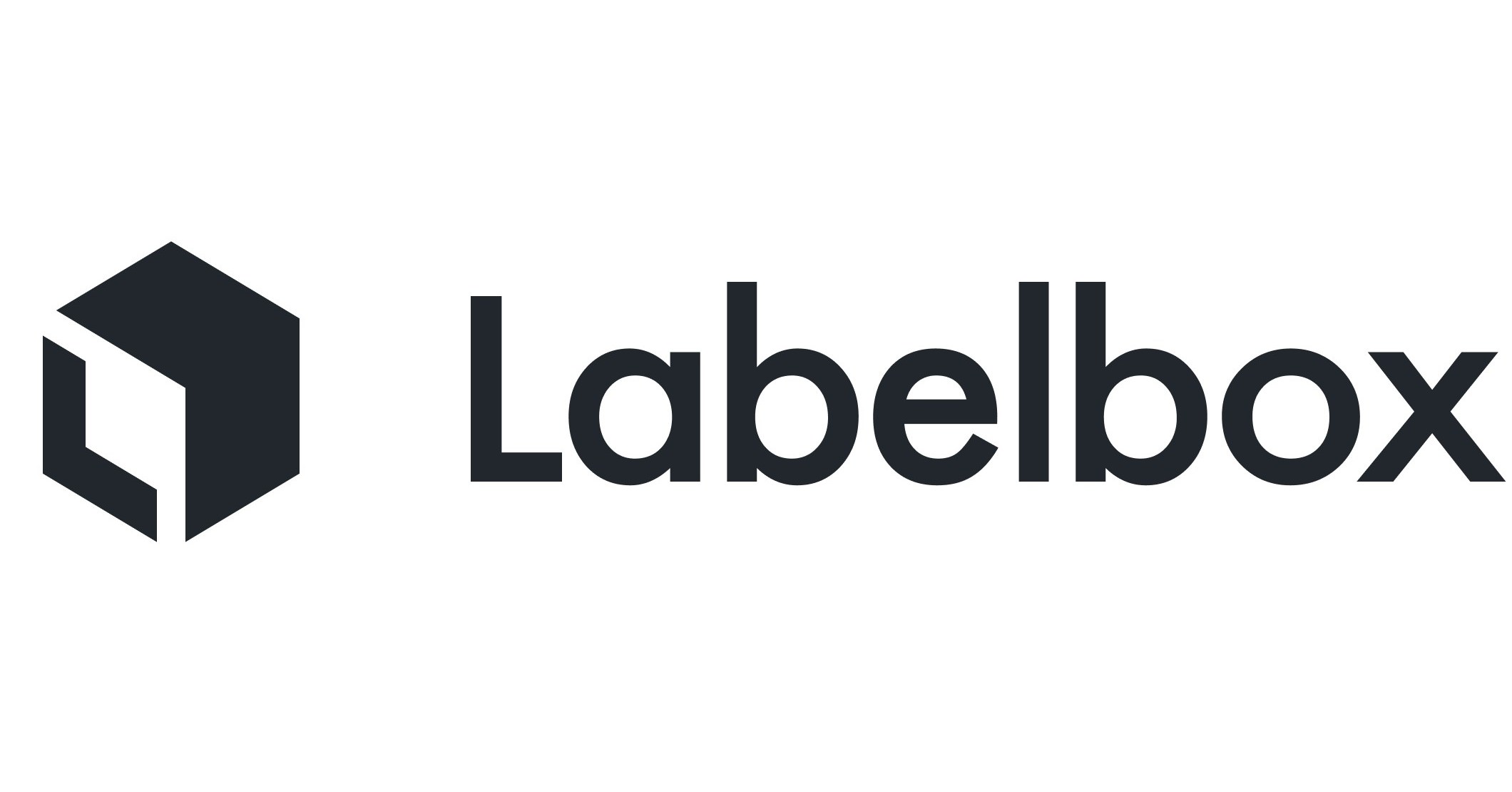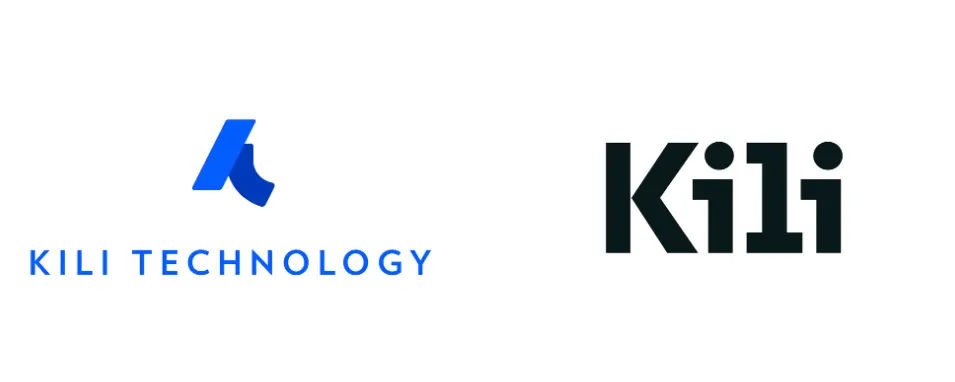Top 7 Data Annotation and Labeling Tools For Security and Surveillance Industry

In the rapidly evolving landscape of security and surveillance, the integration of artificial intelligence (AI) and machine learning (ML) technologies has become pivotal. Central to these advancements is the process of data labeling and annotation, which transforms raw data into actionable insights.
Data labeling involves assigning meaningful tags to raw data, while annotation further enriches these labels with detailed information, enabling algorithms to recognize patterns, objects, and behaviors with high precision.
The security and surveillance sector demands high accuracy and reliability due to its critical role in safeguarding assets, ensuring public safety, and preventing criminal activities.
In this blog, we'll delve into the top data labeling and annotation tools specifically geared toward security and surveillance applications. We will explore their features, strengths, and how they contribute to enhancing the efficacy of AI-driven surveillance systems.
Table of Contents
- Key Applications of Data Labeling and Annotation in Security & Surveillance
- Labellerr
- V7 Labs
- Encord
- Labelbox
- SuperAnnotate
- CVAT (Computer Vision Annotation Tool)
- Kili Technologies
- Conclusion
- FAQS
Key Applications of Data Labeling and Annotation in Security & Surveillance
1) Facial Recognition and Identification
Facial recognition systems rely heavily on accurately labeled datasets to identify and verify individuals in various settings. Data labeling and annotation are crucial for tagging facial features, expressions, and angles under different lighting conditions and occlusions.
This meticulous process enhances the algorithm's ability to recognize faces in real time, contributing to the identification of suspects, missing persons, or unauthorized individuals in secure areas.
2) Object Detection and Tracking
In security and surveillance, detecting and tracking objects such as vehicles, weapons, and unattended bags is vital. Annotated datasets enable AI models to distinguish between different objects and track their movements across multiple frames.
This application is particularly important for monitoring restricted zones, tracking stolen items, and identifying potential threats in public spaces, thereby enhancing situational awareness and response times.
3) Activity and Behavior Analysis
Understanding and interpreting human behavior is a critical aspect of surveillance. Annotated video data helps in training models to recognize specific activities, such as loitering, running, fighting, or any other anomalies present.
By labeling various actions and interactions, these systems can trigger alerts for abnormal activities, aiding in crime prevention and incident management. This capability is essential for environments like airports, schools, and public transportation systems.
4) License Plate Recognition
Automated license plate recognition (ALPR) systems use annotated datasets to accurately read and record vehicle license plates. Data labeling ensures that the system can recognize plates under various conditions, such as different angles, speeds, and lighting.
This application is crucial for traffic management, toll collection, and monitoring vehicles entering and exiting secure premises, helping authorities track and manage vehicle movements efficiently.
5) Intrusion Detection
For perimeter security, detecting unauthorized entries is paramount. Annotated datasets are used to train models to recognize breaches such as fence climbing, gate tampering, or entry through windows.
These systems can differentiate between normal and suspicious activities, reducing false alarms and enhancing the reliability of security measures. This application is widely used to protect critical infrastructure, military installations, and private properties.
Top Data Annotation and Labeling Tools for Security and Surveillance
1) Labellerr

Labellerr stands out as a powerful tool for data labeling and annotation tasks in the security and surveillance industry. Here's a breakdown of its key features, user reviews, and pricing:
Pros:
Feature-rich Segmentation: Perform precise and faster segmentation with pixel perfection. Drag polygon and auto-bordering features prevent overlapping adjacent objects, crucial for identifying and differentiating multiple threats in surveillance footage.
Auto-labeling: Accelerate surveillance use cases with semantic segmentation using features like SAM and active learning, enabling quicker identification of suspicious activities and objects.
Professional Annotation Team: Handle large volumes of surveillance data with fast turnaround times, ensuring timely updates and accurate monitoring for enhanced security measures.
Custom SLA: Starting from 24 hours for batch completion.
24/7 Tool Support: Available for the Enterprise Plan.
Robust QA Process: Set up QA processes that include agreement between annotators, comparison based on ground truth and IOU metrics, model-assisted QA, generative AI-powered QA, and sample visual quality assurance.
Dedicated Account Manager: Manage daily/weekly output efficiently.
Data Privacy and Security Compliance: Comply with HIPAA and GDPR.
Multi-tier Pricing: options based on quality measurement. The default QC process includes 1 round of annotation and 1 round of QC, customizable to match the expected output, timeline, and budget.
Cons:
Limited Format Support: This does not currently support point cloud and 3D data formats.
Pricing:
Pro Plan: Starts at $499 per month for 10-user access with 50,000 data credits included. Additional data credits can be purchased at $0.01 USD per data credit, and extra users can be subscribed to at $29 USD per user.
Enterprise Plan: Offers professional services, including tool customization and ML consultancy apart from custom data, workspace, and other limitations.
2) V7 Labs

V7 Labs offers a powerful platform designed to accelerate the development of computer vision models through efficient data annotation and labeling. It is particularly well-suited for security and surveillance applications, thanks to its intuitive interface and advanced features tailored for processing large volumes of visual data.
Features:
Automated Labeling: leverages AI to automate the labeling process, significantly reducing the time required for manual annotation.
Collaborative Tools: Supports team-based workflows with real-time collaboration features, enabling multiple users to work on the same project simultaneously.
Advanced Annotation Types: Provides various annotation tools such as polygons, bounding boxes, and semantic segmentation, essential for detailed object and activity recognition.
Data Management: Includes robust data management capabilities, allowing users to organize, search, and filter datasets efficiently.
3) Encord

Encord is a comprehensive platform designed for the annotation and management of video data, making it ideal for surveillance tasks that require high precision and efficiency. Its user-friendly interface and powerful features streamline the data annotation process, enhancing the accuracy of machine-learning models.
Features:
Video Annotation: Specializes in annotating video data, offering frame-by-frame precision to capture dynamic activities and objects.
Custom Workflows: Allows users to create custom workflows and annotation pipelines, optimizing the process for specific surveillance needs.
Quality Control: Features built-in quality control mechanisms to ensure high annotation standards and reduce errors.
Scalability: Capable of handling large datasets, making it suitable for extensive surveillance projects involving numerous video feeds.
4) Labelbox

Labelbox is a versatile data annotation platform that supports various types of data, including images and videos, making it a strong choice for security and surveillance applications. It focuses on providing a seamless experience for creating high-quality training datasets for AI models.
Features:
Comprehensive Annotation Tools: Offers a wide range of tools for image and video annotation, including bounding boxes, polygons, and key points.
Data Pipeline Integration: Integrates easily with existing data pipelines and machine learning workflows, facilitating smooth data transfer and processing.
User Management: Includes features for user management and role-based access control, ensuring secure and organized project collaboration.
Analytics and Reporting: Provides detailed analytics and reporting tools to monitor annotation progress and dataset quality, helping to maintain high standards throughout the project.
5) SuperAnnotate

Superannotate offers a comprehensive platform for data annotation, with a focus on high-quality labeling for computer vision projects. Its intuitive interface and advanced features make it well-suited for security and surveillance applications, where precision and accuracy are paramount.
Features:
Semantic Segmentation: Provides robust tools for semantic segmentation, allowing precise labeling of objects and regions within images and videos.
Active Learning: Utilizes active learning algorithms to optimize the annotation process, automatically suggesting annotations to accelerate labeling tasks.
Collaboration Tools: Facilitates seamless collaboration among team members, with features for annotation review, feedback, and version control.
Quality Assurance: Incorporates built-in quality assurance tools to ensure annotation accuracy and consistency, improving the overall reliability of machine learning models.
6. CVAT (Computer Vision Annotation Tool)

CVAT is an open-source annotation tool designed for computer vision tasks, including object detection, segmentation, and classification. Its versatility and customizable features make it suitable for a wide range of security and surveillance applications, providing users with full control over the annotation process.
Features:
Flexible Annotation Formats: Supports various annotation formats, including bounding boxes, polygons, and key points, enabling users to annotate diverse types of visual data.
Customizable Interface: Offers a customizable user interface, allowing users to tailor the tool to their specific annotation workflows and preferences.
Integration Capabilities: Integrates seamlessly with other machine learning frameworks and data management systems, enabling smooth data exchange and collaboration.
Community Support: Benefits from a vibrant open-source community, with ongoing development and support to address user needs and enhance functionality.
7. Kili Technologies

Kili Technologies provides a comprehensive data annotation platform with a focus on scalability and efficiency. It offers a range of annotation tools and features designed to streamline the annotation process and ensure high-quality labeled datasets for security and surveillance applications.
Features:
Annotation Templates: Includes pre-defined annotation templates for common tasks such as object detection, classification, and tracking, accelerating the annotation process.
Automation and AI Integration: Integrates with automation and AI tools to facilitate semi-automated annotation workflows, improving efficiency while maintaining accuracy.
Auditing and Compliance: Incorporates auditing and compliance features to track annotation changes and ensure regulatory compliance, particularly important for sensitive security data.
Real-time Collaboration: Enables real-time collaboration among annotators and project stakeholders, with features for feedback, review, and approval, enhancing teamwork and productivity.
Conclusion
In the realm of security and surveillance, where precision, efficiency, and reliability are paramount, data annotation and labeling tools play a pivotal role in shaping the effectiveness of AI-driven solutions.
The top data annotation and labeling tools highlighted in this discussion offer a diverse array of features and capabilities tailored to the unique demands of security and surveillance applications.
From automated annotation algorithms to customizable workflows and real-time collaboration features, these tools empower users to streamline the annotation process, improve annotation accuracy, and accelerate the development of AI models.
As the field of security and surveillance continues to evolve, the role of data annotation and labeling tools will only grow in importance. By embracing these technologies and harnessing their capabilities, security practitioners can stay ahead of emerging threats, harness the power of AI, and create safer environments for communities around the world.
FAQS:
Q1) What is data annotation, and why is it important in security and surveillance?
Data annotation involves labeling and tagging raw data, such as images and videos, with meaningful information to train machine learning models. In security and surveillance, accurate annotation is crucial for training AI systems to recognize objects, behaviors, and anomalies, thereby enhancing threat detection and situational awareness.
Q2) What types of data can be annotated for security and surveillance purposes?
Various types of data can be annotated, including images, videos, and audio recordings. Common annotations include bounding boxes, polygons, key points, and semantic segmentation masks, depending on the specific requirements of the surveillance task.
Q3) How do data annotation tools contribute to the efficiency of security and surveillance operations?
Data annotation tools streamline the annotation process by providing automated labeling algorithms, customizable workflows, and collaborative features. These tools help security professionals annotate large volumes of data more efficiently, reducing manual labor and accelerating the development of AI models.

Simplify Your Data Annotation Workflow With Proven Strategies
Download the Free Guide

